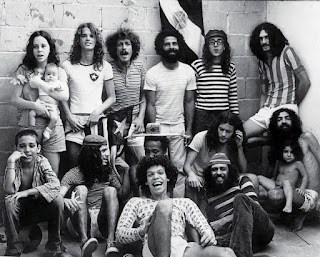Download from: [mf] or [mg]
pass: tdats
I have only made one scandinavian comp so far [edit: Here is Sweden and Norway] and I know there is still a lot of untapped potential for more, so here is my effort to represent Denmark's great heavies. Having been aware only of bloggers favourites like Moses, "Terje Jesper & Joachim", Blues Addicts and Hurdy Gurdy, I was pleasantly surprised at the quantity and quality I found after digging deeper. Like a lot of countries connected to mainland Europe, jazz/fusion rock seemed to be a particular favourite style of the Denmark's 70's prog outfits, though I have only included a couple of bands that were known for that genre, concentrating mainly on my predilection for the heavier fuzz-laden side of things...
Track 1's Hair hail from Denmark's capital, Copenhagen (Danish: København). They only made one album but they showed great talent, ranging from west coast-style psych to faster hard rockers like the track I used here; "Supermouth".
I used the Moses track 'Changes' on my last scandinavian comp, here is my second pick from them; "Skaev" (Danish slang for 'stoned'), They were from the west Jutland peninsula town of Esbjerg and played mainly high-energy, hard psych/blues, with a few sabbathian riffs rising from the depths. This album was unearthed by the German label, Shodoks. Fleur De Lis were from the northern town of Aalborg. They made one album in 1972 and it's a varied multi-instrumental mix with male and female vox, ranging from folk to great hammond fuzzers like this instrumental track, "In Love".
Burnin Red Ivanhoe were another Copenhagen band, and one of the more successful here. They made a name for themselves in the european prog scene along with Danish contemporaries like Secret Oyster and Day of Phoenix. During the short life of the original lineup between 1969 and 1972 they released 4 albums. This comp's title track 'August Suicidal' is taken from a 1974 re-incarnation of the band that made one album, featuring former members Karsten Vogel, Bo Thrige Andersen, Ole Fick, with Kenneth Knudsen (drums) of Secret Oyster, and Karsten Lyng (vocals) from Day Of Phoenix.
"Terje Jesper & Joachim" originated from the beat group "The Unknown". The track here, "Ricochet", is some excellent raw, punky blues. Formed in 1968, they made one album and split in 1973. It was released by Spectator Records, a small Danish label that was home to a few bands in this comp. It was the first one to specialise in home-grown psych and prog therefore it's a good place to start if you want to investigate further. The band consisted of Terje Bandholdt (drums), Jesper Schmidt (guitar) and Joachim Ussing (bass). Ussing and Bandholdt would later play together in the band "Mo-i-ra-na", who I featured on my first heavy blues comp, "54: Late Night Woman Blues".
Copenhagen's Beafeaters are one of the earliest bands on here. Along with another Danish beat group "The Defenders", they were a launchpad for many rock musicians including Ole Fick (Burnin Red Ivanhoe, Secret Oyster), Nils Henriksen (Culpeper's Orchard, Mo-i-ra-na), Carsten Smedegaard (Midnight Sun) and Povl Dissing. I have included two tracks that were back-to-back on their 1967 debut. "Shakin' Fingerpop" is a groovy slab of freakbeat and "Night Flight" is a delectable psych instrumental with an almost space-rock feel and some innovative tape samples that lend even more to the hammond-lead, dreamy ambience.
The Old Man & The Sea were from Horsens, in the east of the Jutland peninsular. Their only record was a concept album based on Ernest Hemingway's last major work of fiction, "The Old Man and the Sea", an epic story of a wise old fisherman's battle with a large marlin. With their excellent heavy progressive musicianship, the band were reasonably successful and played lots of live shows, including Denmark's Roskilde Festival, along with opening slots for big name tours like Led Zeppelin and Ten Years After.
Secret Oyster was a jazz rock band that took it's name from the track "Secret Oyster Service" on Burnin Red Ivanhoe's second album, a band with which they shared members. Though most of their material veers towards the jazz fusion side of things, which is not so much to my particular taste, I had to include this track as I especially like the hypnotic intro/outro, with awesome phased keys and riffing. Some of you guys out there may dig the funky, saxy middle part....let me know if you do!
When Hurdy Gurdy formed in Denmark, the driving member was an english singer/bassist called Mac MacLeod. MacLeod seems to have been in interesting character and at the time was engaged in some correspondence with pop star Donovan who it is said, originally wrote the song "Hurdy Gurdy Man" for Mac. Due to numerous legal and work visa problems for various members, the band moved between The UK and Denmark a couple of times, at one point playing their rendition of "Hurdy Gurdy Man" to Donovan. He wasn't so happy with their heavy take on it and released his own version which became one of his defining hits. Whilst in the UK they did some recordings produced by Chris White and Rod Argent of The Zombies, from which this non-album track 'Tick Tock Man' is taken. MacLeod had left the band by the time they got around to releasing an album, he went on to join the post-Zombies band Argent for a while.
Blues Addicts recorded their sole album in 1970, the same year as Terje Jesper & Joachim, and they later shared a member with that band, bassist Joachim Ussing. Another later member, Carsten Valentin (C.V.) Jorgensen, went on to some solo acclaim and continues to make records now as a singer/songwriter who's main focus is 'biting social satire'. He has performed at Roskilde festival as recently as 2010. "Simple Expression" is some expressive bluesrock with seering leads from guitarist Ivan Horn.
Sume formed in Sorø, in the Region Sjælland, east Denmark. History recalls that founding members Malik Høegh and Per Berthelsen were from Greenland and met in Denmark while studying. It also says they were "Greenland's first recorded rock band", though all three of their albums are labelled as Danish releases. If anybody out there can clarify their history that would be great! They had a quirky, catchy sound with progressive hints, not often heavy but groovy as hell at times and they certainly have some interesting ethnic flavour which I can only guess is some Danish/Greenland folk heritage coming through.
I found Daisy via a couple of friend's recommendations who both came across this track on youtube around the same time. Apparently this single has only just come to light digitally. They made an album in 1975 and they included singer, songwriter and author Lars Muhl from Aarhus, the second-largest city in Denmark. 'Lucifer' starts out well enough but heavies-up nicely around the half-way mark and has some stella guitar/hammond interplay. The b-side was called 'Zimmerman', though I have been unable to find that.
Pan are another band that I have used on my previous scandinavian comp, and I go back to the same s/t album for this short and wicked instrumental groove-out, 'They Make Money With The Stars [Pt 2]'. Revealed by Danish obscurity label Frost, it appears that Copenhagen's Pocket-Size never released anything, and we only have Frost's 2003 retrospective made from live recordings and demos. It's a shame as this track shows their solid skills with some big stoned chops, ably assisted by great hammond.
The penultimate band here is 'System'. They made two albums in 1974-5 and 'While Nixon Plays The Piano' is taken from the first one called 'Sensory System'. It's a great, adventurous album, a convincing display of long multi-part song structures with plenty of heaviness, compelling axemanship and a fair amount of prog moves. It does remind in places of Budgie and Rush, partly because the decent frantic vocals are vaguely reminiscent of Geddy Lee and Burke Shelley, but also because it often reaches the level of those bands. A word of warning, don't bother with the second album, 'What We Are', it is far inferior and if you hear it first don't let it put you off looking for the excellent debut.
Copenhagen's Young Flowers bring us the final track, they were one of Denmark's earliest heavy blues/psych bands, obviously indebted to Cream. They made two albums, both in 1969, and were the first Danish rock band to play in Canada and the US. The group consisted of Jens Henrik Dahl (guitar) from The Defenders, Peter Ingemann (bass and vocals), who had played in the Seven Sounds and Ken Gudman (drums) who also came from The Defenders. 'Slow Down Driver' is, in the main, some fairly pedestrian blues rock, but the psychedelic segues in between the verses are quite mesmerising, and there is definitely an emphasis on the guitar fuzz which a lot of you will dig.
pass: tdats
I have only made one scandinavian comp so far [edit: Here is Sweden and Norway] and I know there is still a lot of untapped potential for more, so here is my effort to represent Denmark's great heavies. Having been aware only of bloggers favourites like Moses, "Terje Jesper & Joachim", Blues Addicts and Hurdy Gurdy, I was pleasantly surprised at the quantity and quality I found after digging deeper. Like a lot of countries connected to mainland Europe, jazz/fusion rock seemed to be a particular favourite style of the Denmark's 70's prog outfits, though I have only included a couple of bands that were known for that genre, concentrating mainly on my predilection for the heavier fuzz-laden side of things...
Track 1's Hair hail from Denmark's capital, Copenhagen (Danish: København). They only made one album but they showed great talent, ranging from west coast-style psych to faster hard rockers like the track I used here; "Supermouth".
 |
| Moses |
Burnin Red Ivanhoe were another Copenhagen band, and one of the more successful here. They made a name for themselves in the european prog scene along with Danish contemporaries like Secret Oyster and Day of Phoenix. During the short life of the original lineup between 1969 and 1972 they released 4 albums. This comp's title track 'August Suicidal' is taken from a 1974 re-incarnation of the band that made one album, featuring former members Karsten Vogel, Bo Thrige Andersen, Ole Fick, with Kenneth Knudsen (drums) of Secret Oyster, and Karsten Lyng (vocals) from Day Of Phoenix.
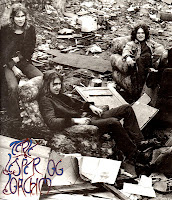 |
| Terje Jesper & Joachim |
Copenhagen's Beafeaters are one of the earliest bands on here. Along with another Danish beat group "The Defenders", they were a launchpad for many rock musicians including Ole Fick (Burnin Red Ivanhoe, Secret Oyster), Nils Henriksen (Culpeper's Orchard, Mo-i-ra-na), Carsten Smedegaard (Midnight Sun) and Povl Dissing. I have included two tracks that were back-to-back on their 1967 debut. "Shakin' Fingerpop" is a groovy slab of freakbeat and "Night Flight" is a delectable psych instrumental with an almost space-rock feel and some innovative tape samples that lend even more to the hammond-lead, dreamy ambience.
The Old Man & The Sea were from Horsens, in the east of the Jutland peninsular. Their only record was a concept album based on Ernest Hemingway's last major work of fiction, "The Old Man and the Sea", an epic story of a wise old fisherman's battle with a large marlin. With their excellent heavy progressive musicianship, the band were reasonably successful and played lots of live shows, including Denmark's Roskilde Festival, along with opening slots for big name tours like Led Zeppelin and Ten Years After.
| Secret Oyster |
When Hurdy Gurdy formed in Denmark, the driving member was an english singer/bassist called Mac MacLeod. MacLeod seems to have been in interesting character and at the time was engaged in some correspondence with pop star Donovan who it is said, originally wrote the song "Hurdy Gurdy Man" for Mac. Due to numerous legal and work visa problems for various members, the band moved between The UK and Denmark a couple of times, at one point playing their rendition of "Hurdy Gurdy Man" to Donovan. He wasn't so happy with their heavy take on it and released his own version which became one of his defining hits. Whilst in the UK they did some recordings produced by Chris White and Rod Argent of The Zombies, from which this non-album track 'Tick Tock Man' is taken. MacLeod had left the band by the time they got around to releasing an album, he went on to join the post-Zombies band Argent for a while.
 |
| Blues Addicts |
Sume formed in Sorø, in the Region Sjælland, east Denmark. History recalls that founding members Malik Høegh and Per Berthelsen were from Greenland and met in Denmark while studying. It also says they were "Greenland's first recorded rock band", though all three of their albums are labelled as Danish releases. If anybody out there can clarify their history that would be great! They had a quirky, catchy sound with progressive hints, not often heavy but groovy as hell at times and they certainly have some interesting ethnic flavour which I can only guess is some Danish/Greenland folk heritage coming through.
| Daisy, Lucifer 45 |
Pan are another band that I have used on my previous scandinavian comp, and I go back to the same s/t album for this short and wicked instrumental groove-out, 'They Make Money With The Stars [Pt 2]'. Revealed by Danish obscurity label Frost, it appears that Copenhagen's Pocket-Size never released anything, and we only have Frost's 2003 retrospective made from live recordings and demos. It's a shame as this track shows their solid skills with some big stoned chops, ably assisted by great hammond.
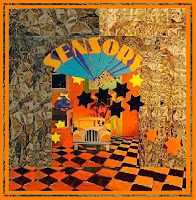.jpg) |
| Sensory System (1974) |
 |
| Young Flowers |
01. Hair - Supermouth (1970)
from album "piece"
02. Moses - Skaev (1971)
from album 'changes'
03. Fleur De Lis - In Love (1972)
from album 'facing morning'
04. Burnin Red Ivanhoe - August Suicidal (1974)
from album 'right on'
05. Terje Jesper & Joachim - Ricochet (1970)
from album 'terje jesper & joachim'
06. Beefeaters - Shakin' Fingerpop / Night Flight (1967)
from album 'beef eaters'
07. The Old Man & The Sea - The Monk Song Part 2 (1972)
from album 'the old man & the sea'
08. Secret Oyster - Black Mist (1974)
from album 'sea son'
09. Hurdy Gurdy - Tick Tock Man (1970)
single
10. Blues Addicts - Simple Expression (1970)
from album 'blues addicts'
11. Sume - Takornartaq (1974)
from album 'inuit nunaat'
12. Daisy - Lucifer (1969)
single
13. Pan - They Make Money With The Stars [Pt 2] (1970)
from album 'pan'
14. Pocket-Size - In One Or Another Condition (1970)
from retrospective 'in one or another condition'
15. System - While Nixon Plays The Piano (1974)
from album 'sensory system'
16. Young Flowers - Slow Down Driver (1969)
from album 'vol. 2'
Thanks for listening! Rich
Share via:
Share via:
































































.jpg)


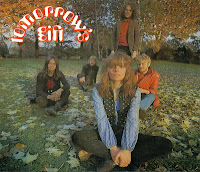

+-+Front.jpg)
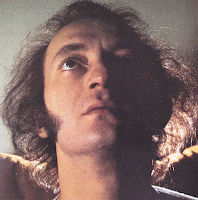




















































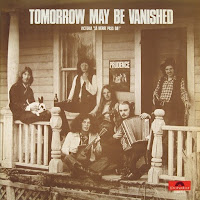











































.jpg)



